As I detailed in my prior post, we didn’t have the best start to our time in Peru. Still, we arrived back in Lima with open minds and high hopes for enjoying Peru’s capital city. Unfortunately, our first impressions of our Airbnb (review below) could have been better, mostly because Lima in February is quite hot (mid-80s Fahrenheit with humidity) and the apartment’s fans struggled to relieve the stuffiness from being closed up for several days. Luckily it wasn’t as bad as we thought and we grew to really like the apartment.



Seaside Walks
For our first few days in Lima, we focused primarily on work, but made time each day for a walk and/or picnic where we could see the sea. We really loved the neighborhood we chose, Barranco, which felt much smaller than the rest of Lima.
We weren’t tempted to actually go to the beach, however, just due to the amount of effort required and how crowded they seemed to be. But we really enjoyed watching the surfers and just seeing the waves from our neighborhood above. The only downside is that with Peru’s proximity to the equator, the sun is very intense in the summer months. We used lots of sunscreen and tried to find shade whenever we could.


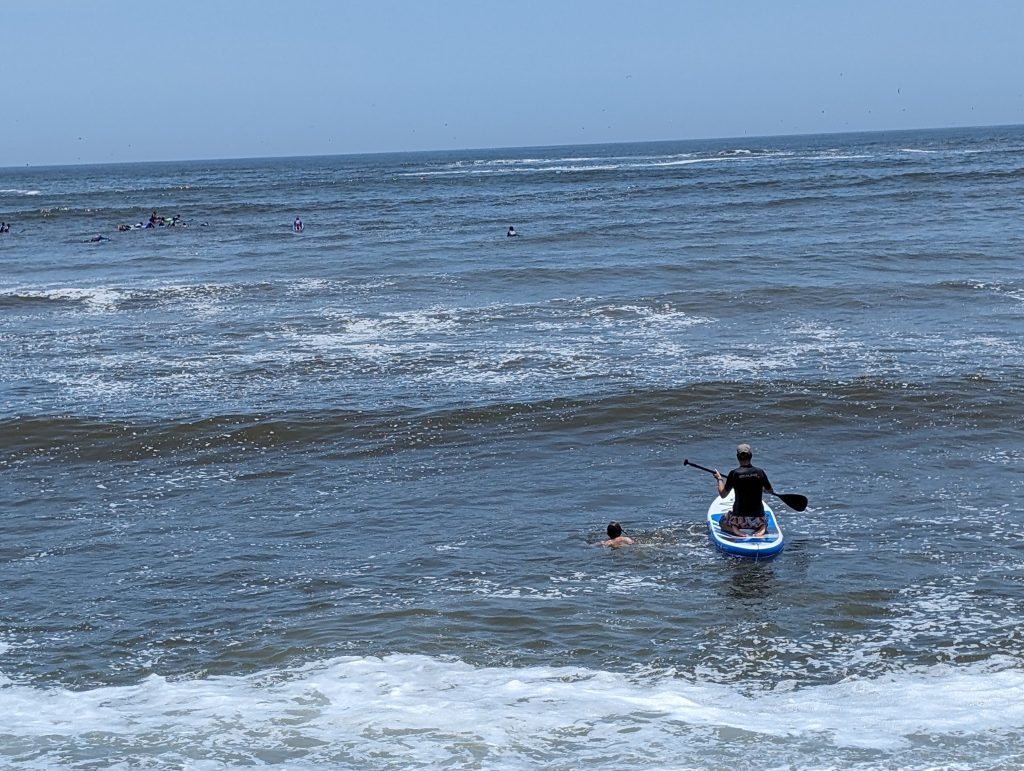
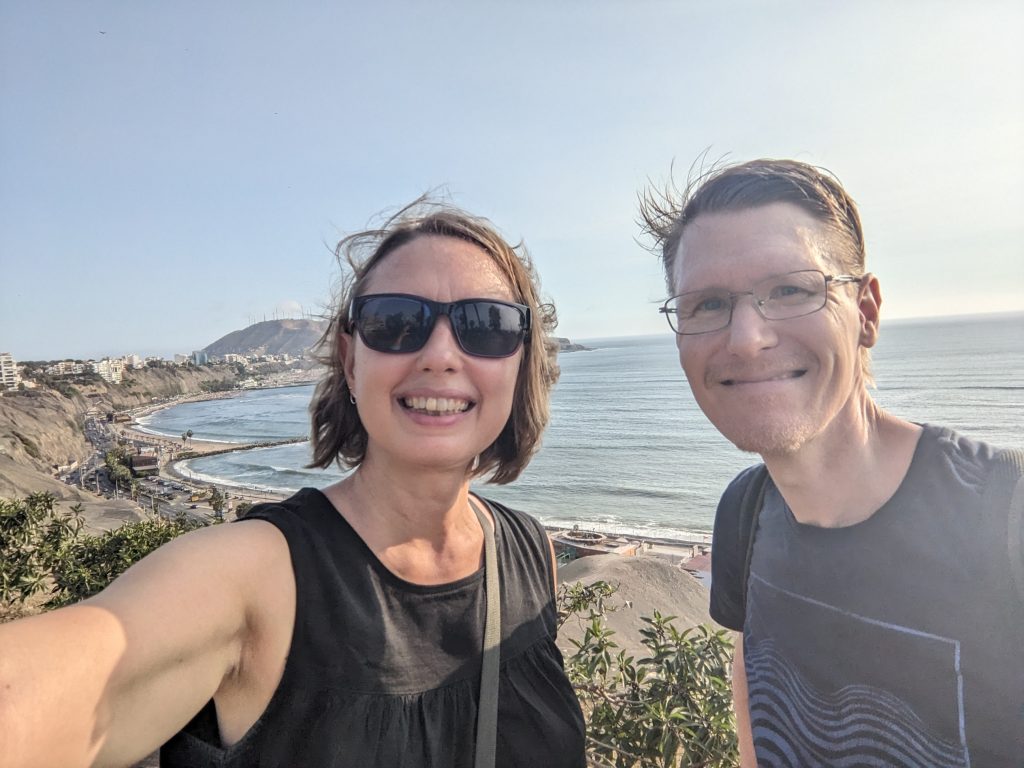


Museo Larco
Our first outing in Lima was to the Museo Larco, which contains a large collection of indigenous artifacts. The museum was extremely well-done and informative. I knew very little about the cultures in Peru prior to the Inca. The museum did an excellent job explaining their histories, cultures, and beliefs. I was especially interested in their vision of a tripartite cosmology of sky, earth, and underground, represented in many of the artifacts as a combination bird-cat-snake.
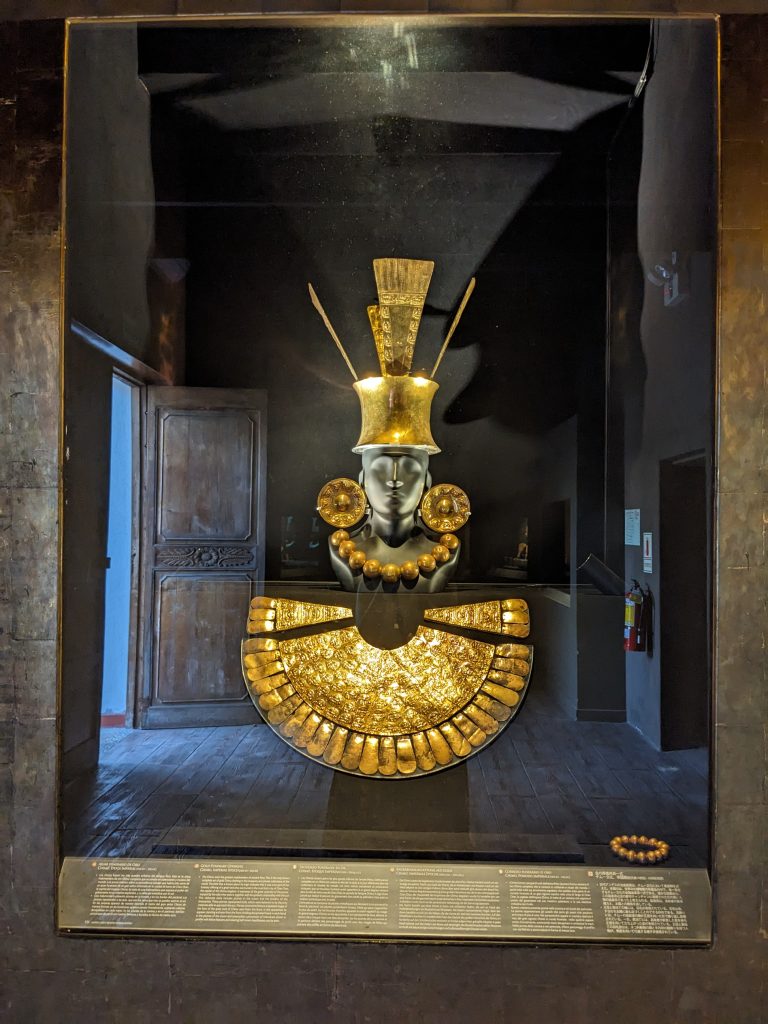




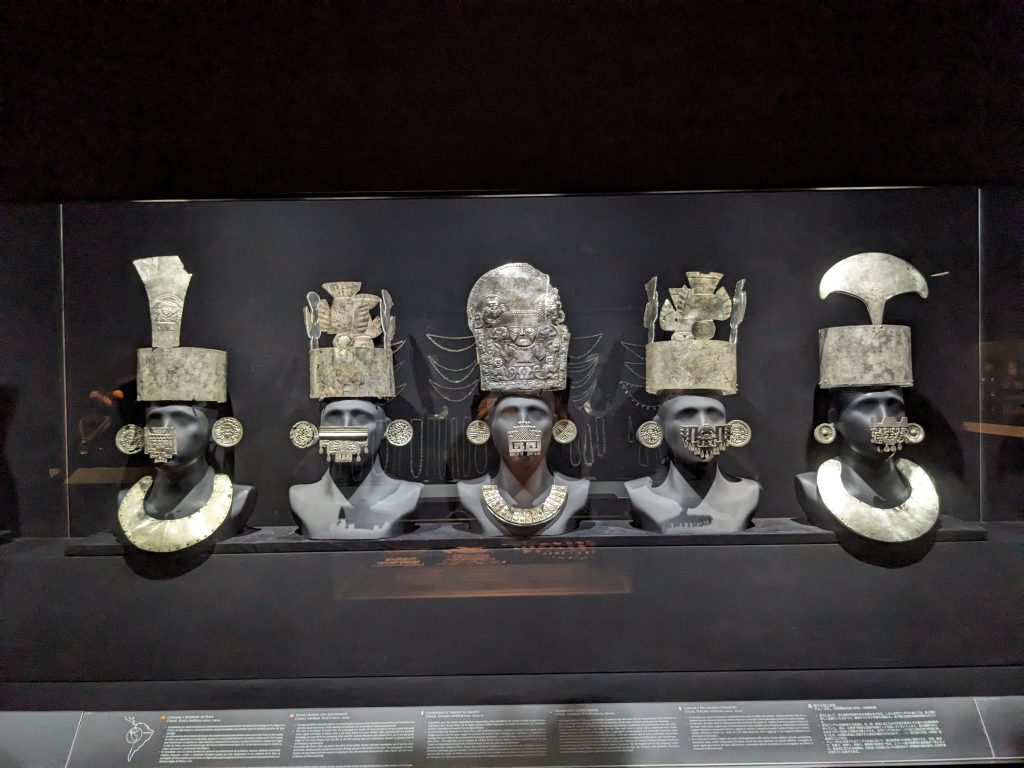

However, the best part of the museum was their open storage building where they housed the thousands of pots and other artifacts not on display at the museum. I wish more museums did this because it was incredibly impressive to see the shelves and shelves of pottery. It was also very interesting to learn about the archeologist namesake of the museum, Rafael Larco Hoyle, who seemed to contribute quite a lot to the field of archeology and especially highlighting the pre-Inca cultures of Peru. I definitely consider this museum a must-visit in Lima for anyone interested in ancient history and cultures.



Plaza Mayor and Convento de Santo Domingo
Our next outing was several days later, when we visited the historic center of Lima. The Plaza Mayor (main square) was very impressive. We had the opportunity to tour a couple of historic buildings – the Convento de Santo Domingo and the Casa de la Literatura Peruana.




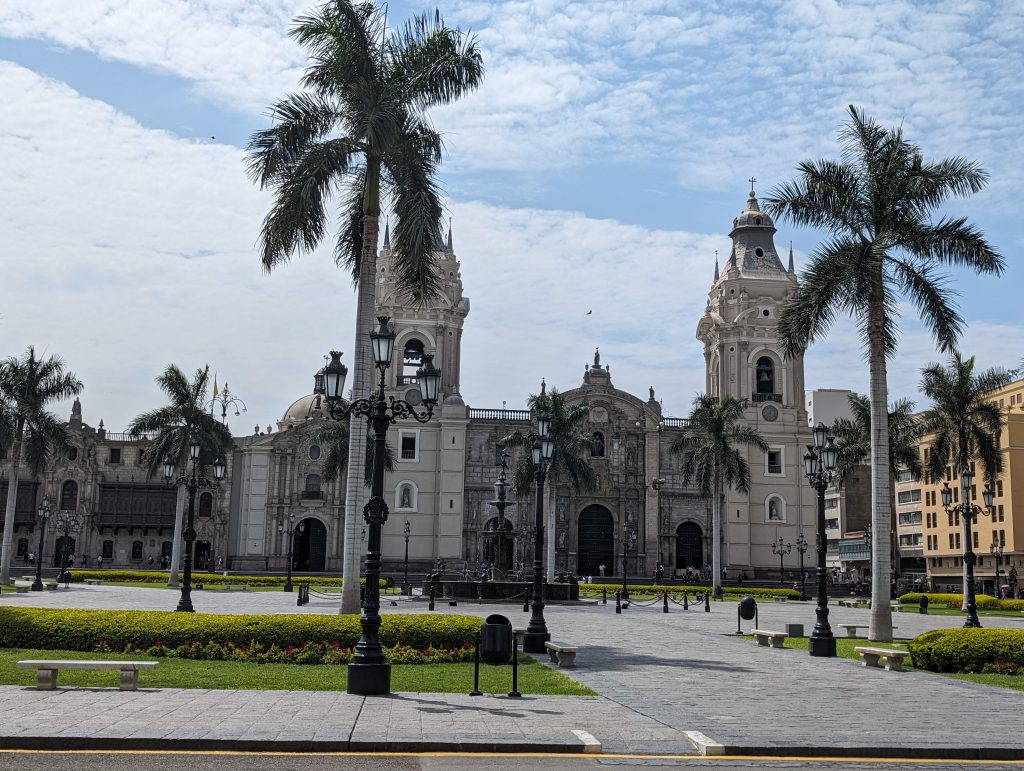
The Convento and attached Basilica were especially impressive, dating back to the 16th century. The convent continues to be in operation. Among the displays were rooms devoted to each of the three Peruvian saints and the crypt of Saint Rose. It was all very interesting, especially the art and architecture. We also really liked noticing the details that reminded us of other Spanish architecture we’ve visited, especially the Alhambra.

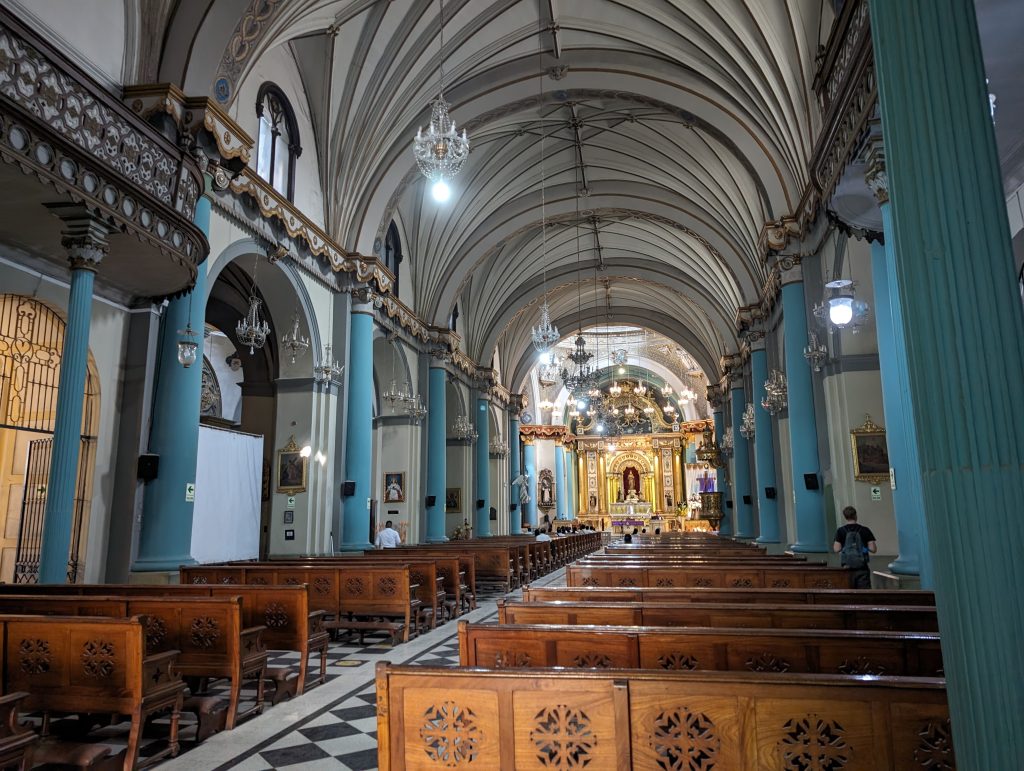

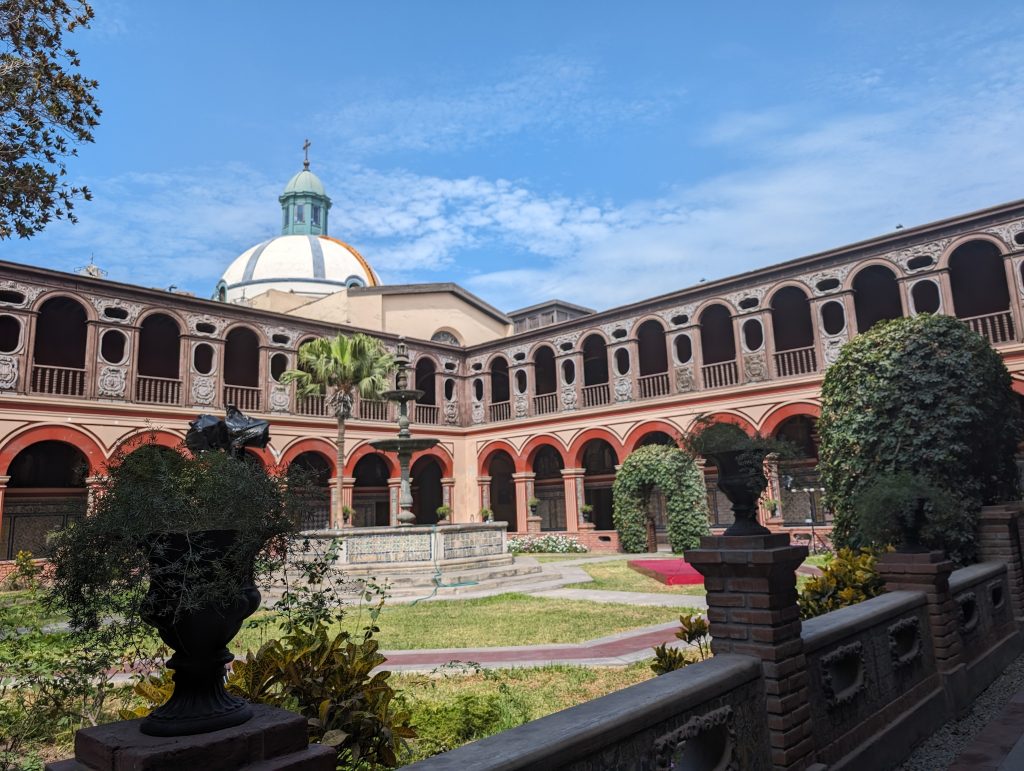
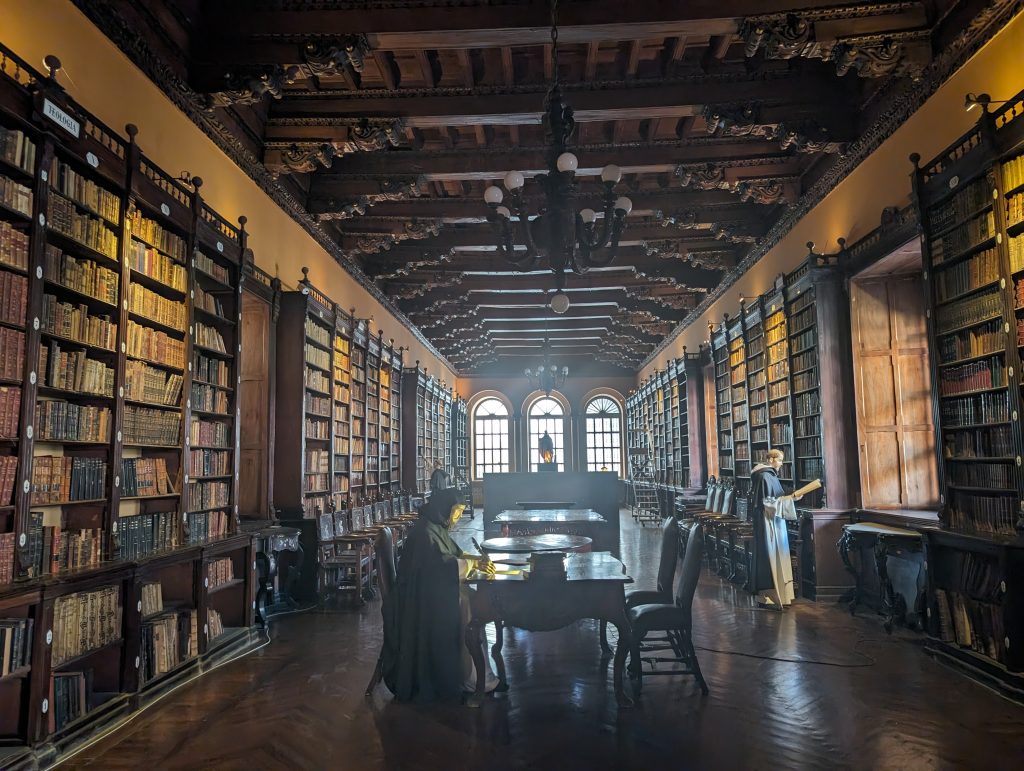

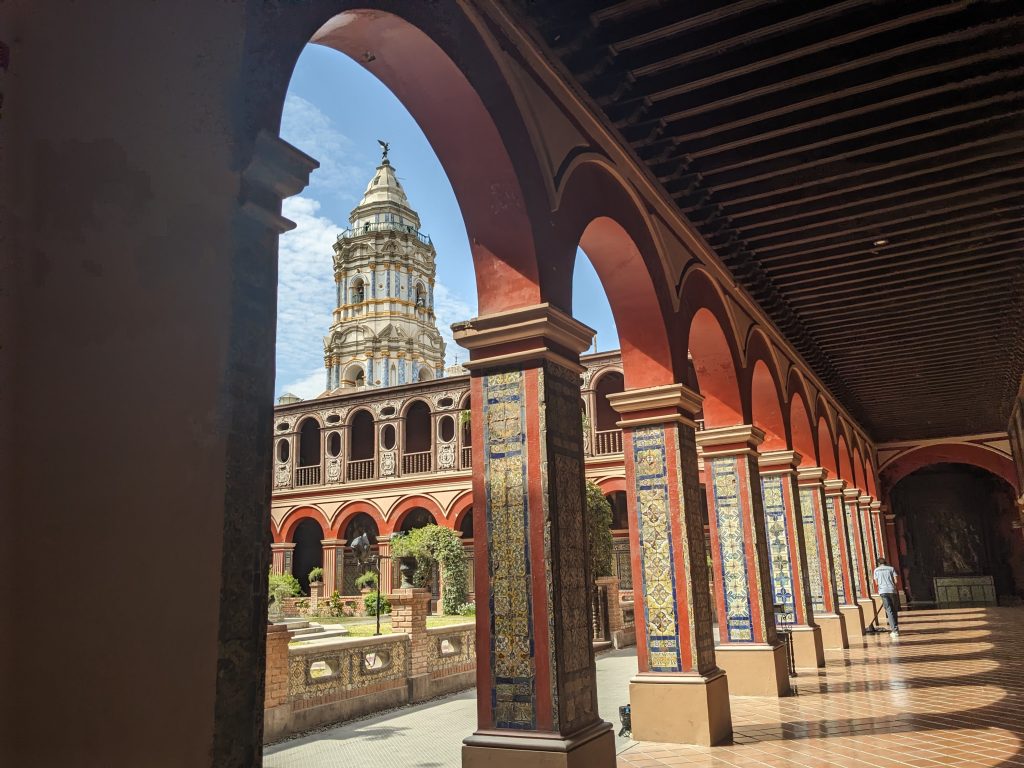


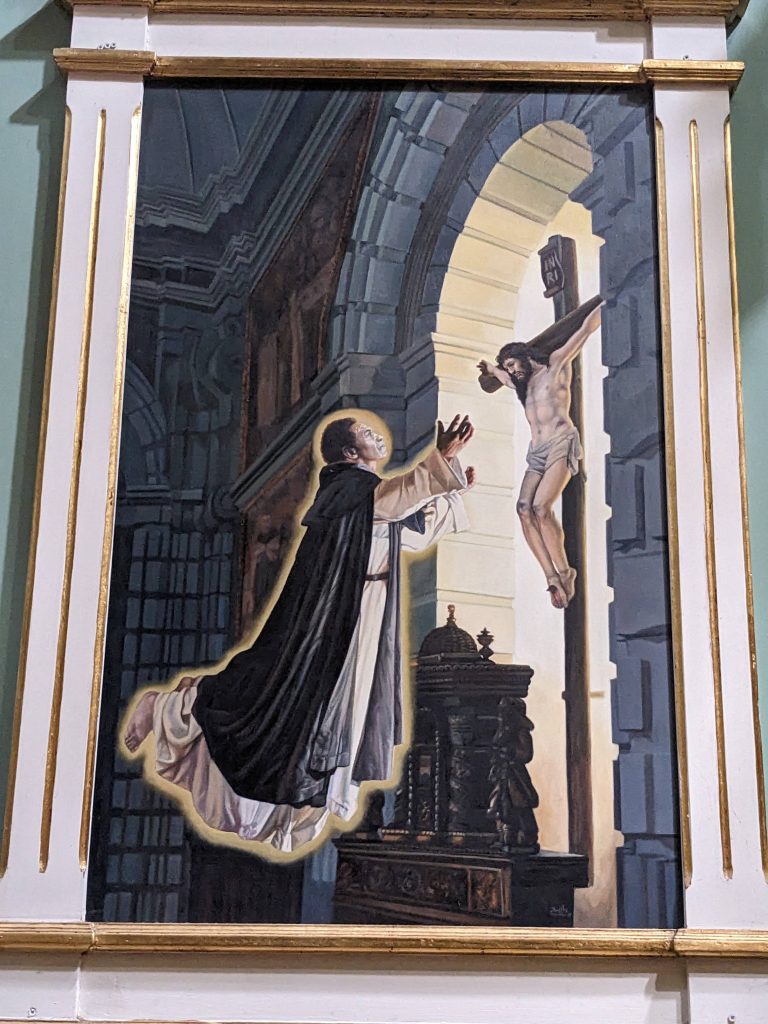
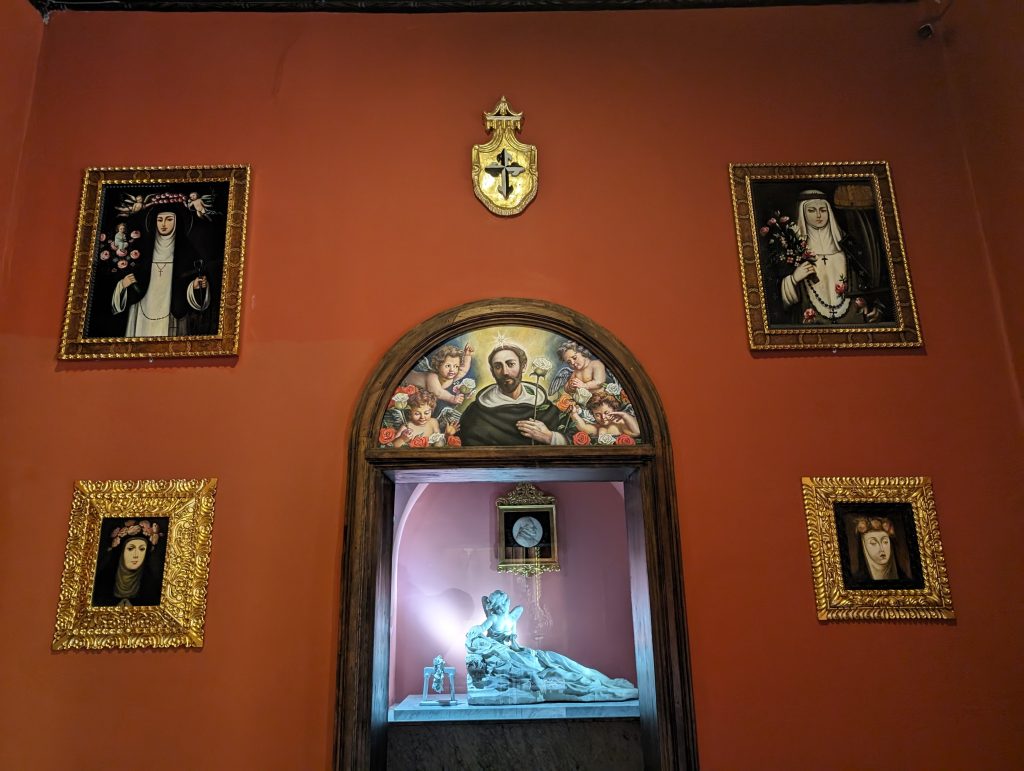
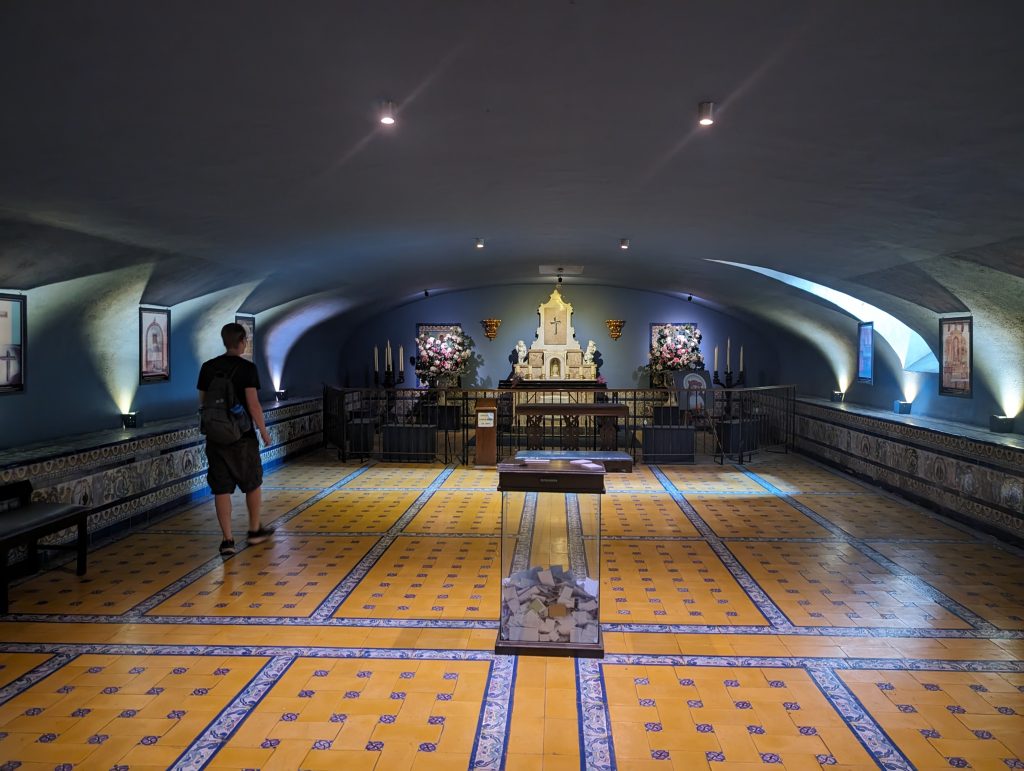

The Casa de la Literatura is a culture center in a converted train depot celebrating Peruvian literature. The architecture and displays here were also interesting and worth a visit, though our energy was flagging a bit by that point and we were ready for some food.

All the restaurants in this area seemed pretty touristy so we chose to take an Uber back to Barranco and enjoyed an excellent brunch of croissants (stuffed with chocolate for Chad and avocado for me) and fresh mango-maracuya (passion fruit) juice. Passion fruit juice has truly been a revelation for us in Peru and paired with mango (or pisco!), it is perfect.

Miraflores Walk and Chifa
In my research into Lima, it seemed like most people choose to stay in the upscale neighborhood of Miraflores, which is a 15-minute Uber ride from Barranco where we chose (mostly based on the Airbnb accommodation). So we definitely wanted to check out this other great neighborhood. I also wanted to mail the postcards I didn’t have time to send in Argentina and there wasn’t a convenient Serpost (Peru’s mail service) branch in our neighborhood. So we took an Uber to the Miraflores Serpost, sent postcards to my very dear friends, and then set off on a long walk to explore the neighborhood.
Although we barely scratched the surface (Miraflores is a large neighborhood), we saw enough to convince us that Miraflores is very nice but we made the right choice with Barranco. Miraflores seems much more modern, with tons of highrises, but Barranco has more charm. In Miraflores, we enjoyed Parque Kennedy (named for JFK) and seeing the many parks along the Miraflores malecon, especially the Chinese garden.


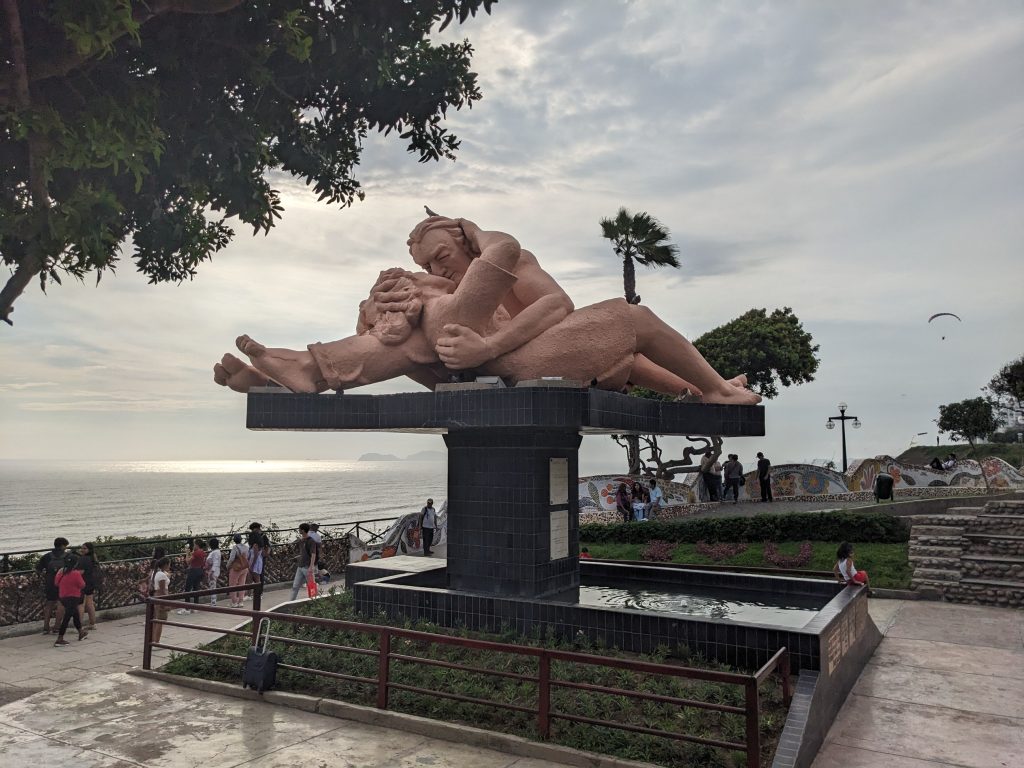
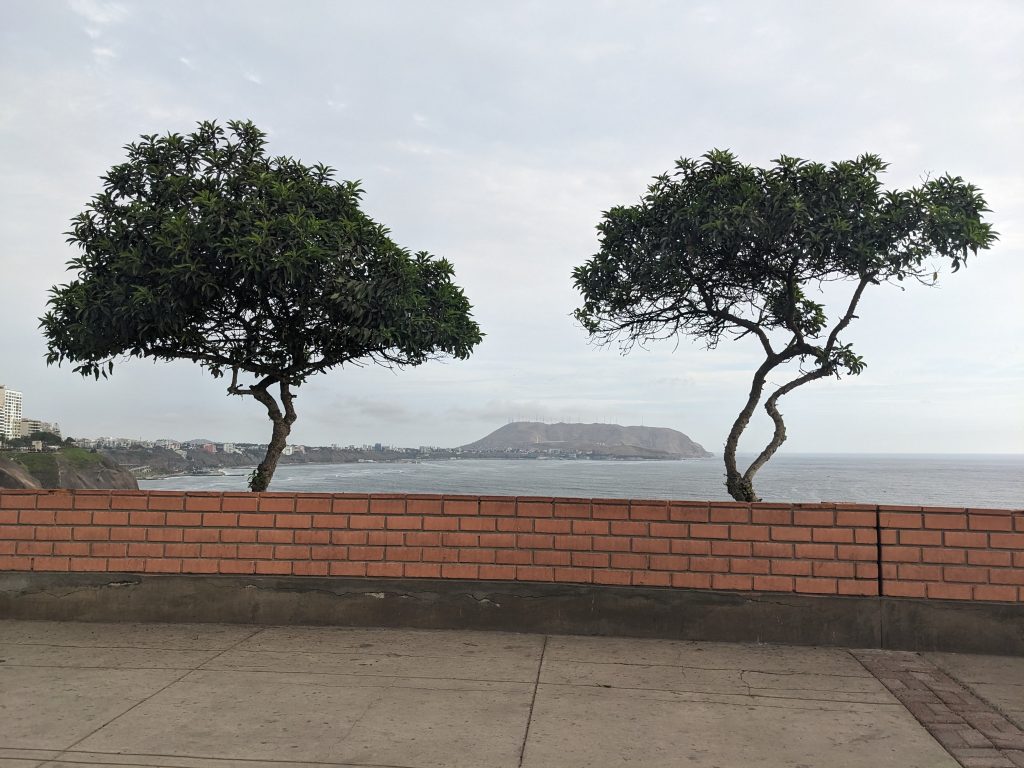


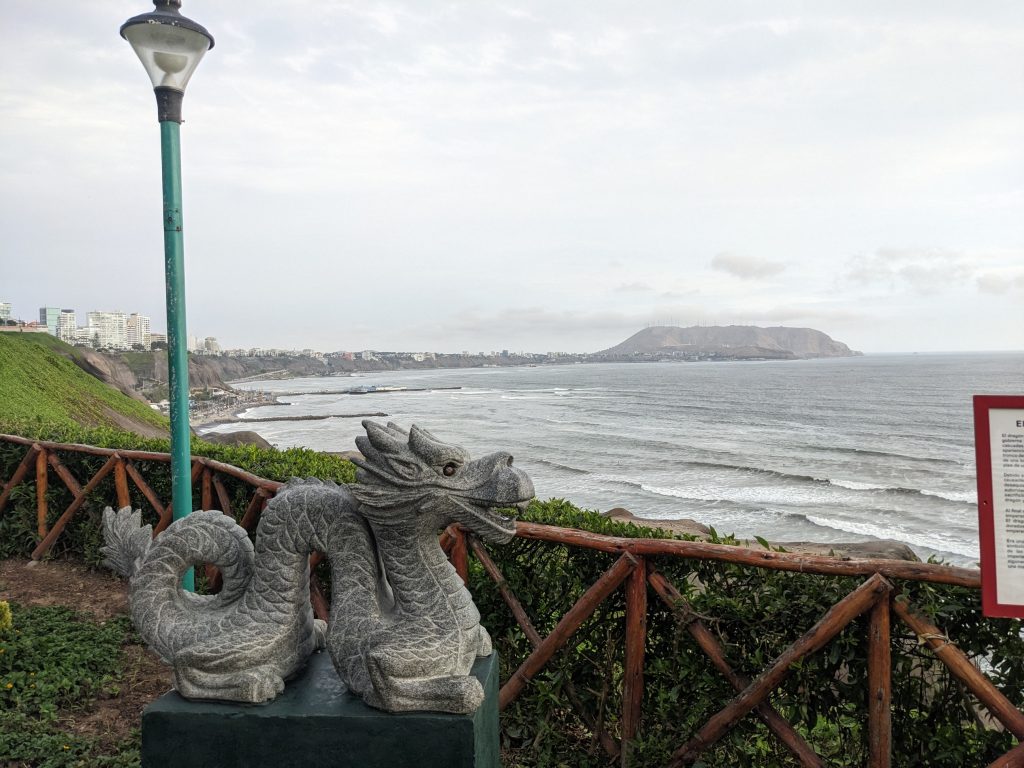
After a little over an hour of walking we looked into Miraflores bars and restaurants but didn’t see anything tempting so it was an easy decision to take an Uber back to Barranco for a cocktail and dinner. We chose a local-feeling bar for our cocktail and were warmly welcomed. We again chose the maracuya version of the pisco sour and chilcano and both were delicious. After our cocktail, we decided to finally try the famous chifa, Peruvian-Chinese fusion. We chose a restaurant called Gran Chifa Chung Yion and had a very interesting experience dining in our own cubicle space with a curtain for privacy. Everything we ordered (shumai dumplings, curry vegetables, and rice noodles with duck) was delicious. The portions were huge and there was enough to take home for a full meal of leftovers. We are definitely fans of chifa.



Museo Pedro de Osma and Pisco Tasting
For our final outing in Lima, we stuck to our own neighborhood, starting with a visit to the museum down the street, Museo Pedro de Osma. The museum was created out of the family’s private art collection and was very well done and the perfect size to take it all in. And, the building, which had been the family home. A big highlight was seeing the change in styles between the Mannerism and Baroque eras. Chad had recently been reading about that and seeing the works in the museum really brought it to life.
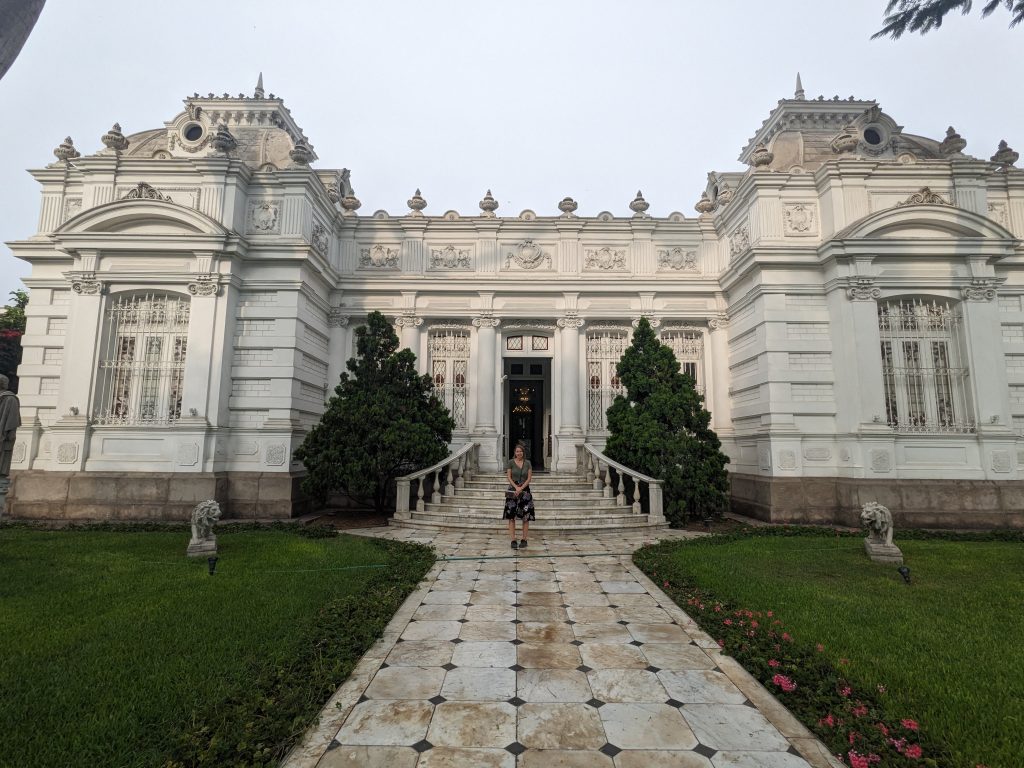


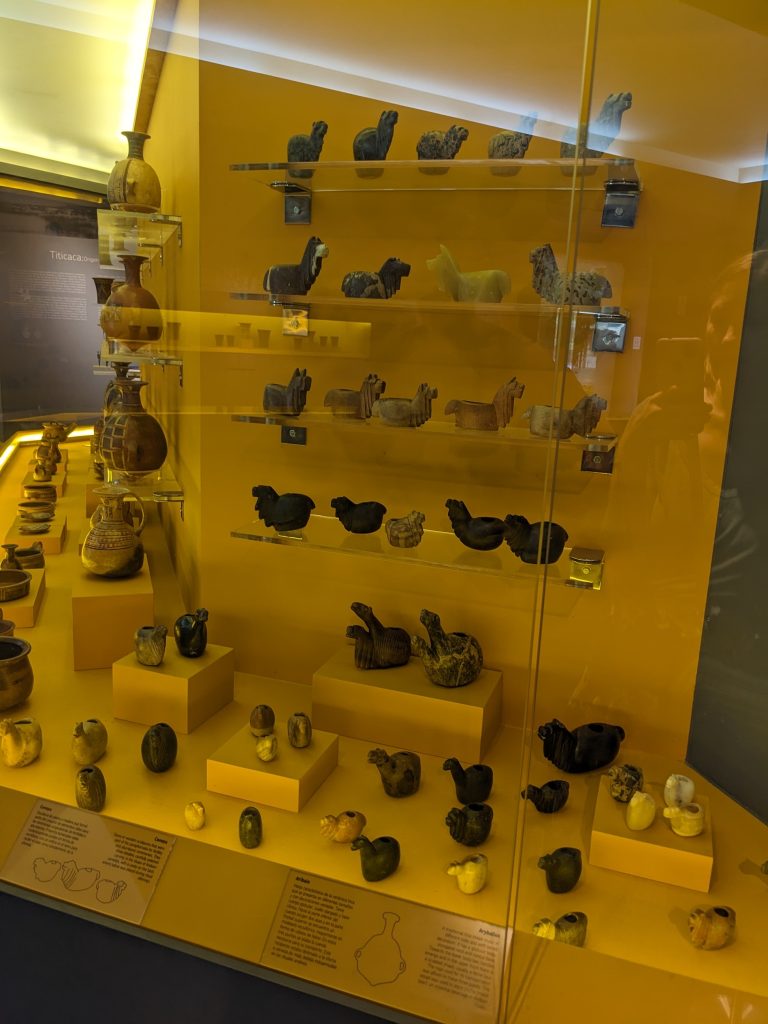




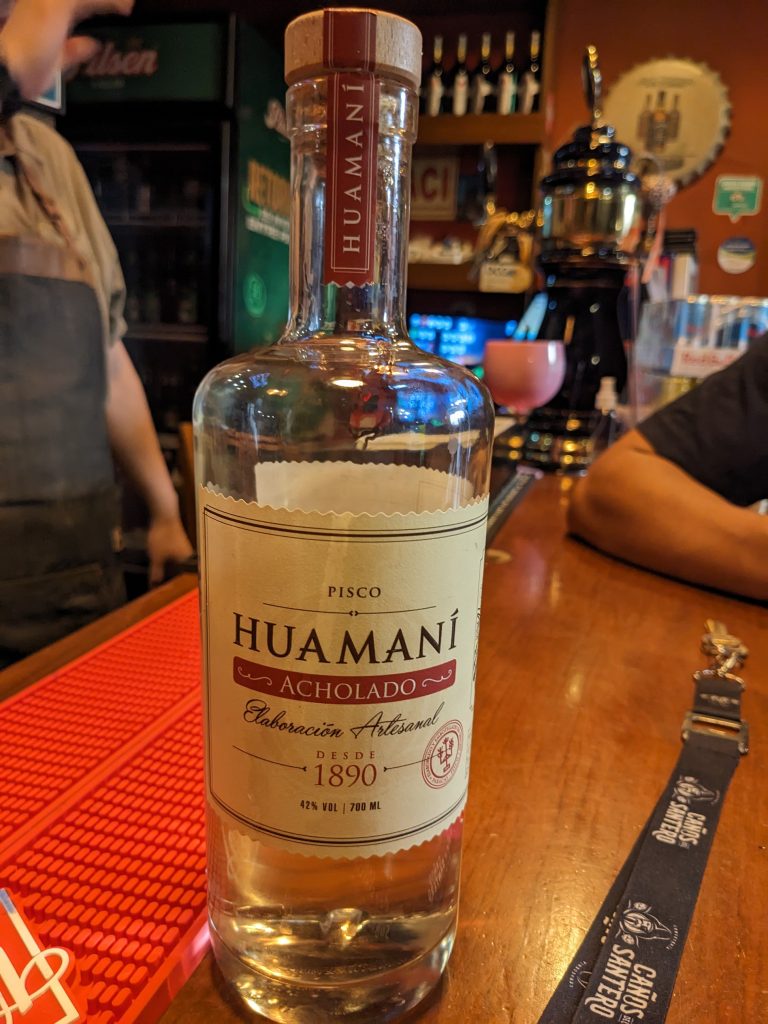
After the museum, we wanted to learn about pisco by comparing a couple of different styles. This is apparently not widely offered, but we figured no one would object to us ordering a couple of different shots of pisco to compare and contrast. We tried a place called Gringo Bar near the square which proved to be a great choice because the very friendly bartender spoke great English (which he uses to bartend on cruise ships) and his friend sitting at the bar was the son of a renowned pisco expert (we Googled his mom’s books but unfortunately they’re only available in Spanish). We learned a lot about the different types of pisco available (puros versus alcholados), tried an example of each and then the bartender made us his own excellent pisco sour, talking us through the steps and proportions. Chad is excited to put this new knowledge to use for friends back home this summer. We were so engaged that we didn’t get any photos other than of the bottle of pisco we really liked.
Summary
The next day we said goodbye to Lima with a direct flight to Arequipa. During our time in Lima we grew to like Peru more and more. We left looking forward to discovering more about the food, history, and culture in the coming weeks. I’m not sure we’ll be back to Lima since we saw everything we intended to, but I’m glad we had nearly two weeks there.
Airbnb Review – My husband and I had a good stay here for about 10 days but it was very hot during the day in February even with ceiling fans in the living room and bedroom. The host was kind enough to bring an additional fan which helped and we were comfortable overnight for sleeping. Wifi was excellent, the apartment was clean, and the furniture was comfortable. The kitchen had the basics for light cooking but was pretty sparse. Good communication from the management company. We loved the neighborhood and were very glad we chose this place.